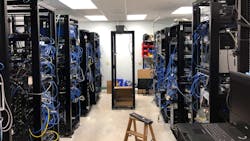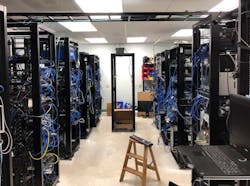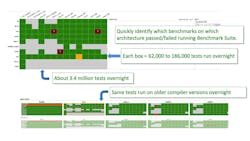Be Prepared for Remote Work
What you’ll learn:
- What are some of the remote test and development challenges?
- How Green Hills Software was prepared to address the challenge of remote developers and testers.
Working remotely went from an occasional benefit to a mandatory situation for those who didn’t have to be in their workplace in person. There are still millions, from first responders to assembly line workers, who can’t work remotely, but there are even more who can do that, especially in the computer and electronics industry.
Still, it’s not simply a matter of using a smartphone to call in daily. In certain cases, a telephone or video-conferencing interface is all some need to get the job done. However, many need a bit more infrastructure. One company that had some of this infrastructure in place was Green Hills Software.
Robert Redfield, Director Business Development, Green Hills Software, said, “Green Hills Software has used an internet-connected Embedded Board Farm for decades. It’s an essential tool for developing and testing real-time operating systems and IDE, and optimizing C/C++ compilers. Before COVID, the Embedded Board Farm was essential for our globally distributed product and test engineers. Over the last 11 months during the pandemic, the offices have been closed, but engineers have used the boards from home without interruption.”
The company’s Embedded Board Farm (Fig. 1) consists of many racks of device-under-test (DUT) boards. Each board has one or more pieces of test equipment connected to it. A central system manages access and operation of each DUT. It has the ability to reset any unit and manages the recording of information as well as access for a remote debugger to take control of the DUT. Duplicates of popular platforms allow more tests or testers to use a particular platform.
One of the test devices employed in the farm is the Green Hills Probe V4 (Fig. 2). It has an Ethernet interface like many other similar debug probes. There are even systems that have wireless connectivity. The Green Hills Probe functions within the TimeMachine Debugging Suite, which works with the Green Hills MULTI IDE. There’s an LCD status screen on the unit, but that’s not needed for remote operation.
The system can handle multiple chips on a single JTAG scan chain as well as multicore chips. The probe provides programmable power to the board, which simplifies cabling. Power and Ethernet are the only connections needed for a DUT and probe.
Tracking all of these devices is where a lot of the upfront work helped. Developers have access to a Test Suite Dashboard interface (Fig. 3). The system is set up to run multiple tests for regression analysis as well as allow for debugging of individual DUTs.
Any company or group of developers can easily create their own farm using probes like those available from Green Hills. The main issue is scope. Green Hills farm management is used internally and handles a very large number of devices.
Many companies have developed similar farms with custom software to manage the farm. The payoff for them has been significant given the COVID epidemic. It’s enabled movement of developers from the office to their home with almost no change to their use of the farm. Only a few people are involved in adding new hardware to the farm—this process was already set up.
About the Author
William G. Wong
Senior Content Director - Electronic Design and Microwaves & RF
I am Editor of Electronic Design focusing on embedded, software, and systems. As Senior Content Director, I also manage Microwaves & RF and I work with a great team of editors to provide engineers, programmers, developers and technical managers with interesting and useful articles and videos on a regular basis. Check out our free newsletters to see the latest content.
You can send press releases for new products for possible coverage on the website. I am also interested in receiving contributed articles for publishing on our website. Use our template and send to me along with a signed release form.
Check out my blog, AltEmbedded on Electronic Design, as well as his latest articles on this site that are listed below.
You can visit my social media via these links:
- AltEmbedded on Electronic Design
- Bill Wong on Facebook
- @AltEmbedded on Twitter
- Bill Wong on LinkedIn
I earned a Bachelor of Electrical Engineering at the Georgia Institute of Technology and a Masters in Computer Science from Rutgers University. I still do a bit of programming using everything from C and C++ to Rust and Ada/SPARK. I do a bit of PHP programming for Drupal websites. I have posted a few Drupal modules.
I still get a hand on software and electronic hardware. Some of this can be found on our Kit Close-Up video series. You can also see me on many of our TechXchange Talk videos. I am interested in a range of projects from robotics to artificial intelligence.




